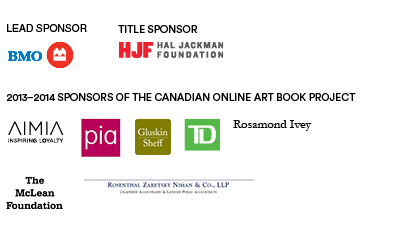An artistic anarchist and a rebellious theorist, Paul-Émile Borduas (1905–1960) sought a new freedom for visual expression, opposing the narrow nationalism of mid-twentieth-century Quebec. In 1938, while studying in Paris, Borduas was influenced by the “automatic painting” techniques of French writer and Surrealist André Breton and by Leonardo da Vinci’s suggestion that an artist can create without a preconceived idea. Returning to Montreal, Borduas began to engage his impulses, releasing his mind of literary ideas and “automatically” transforming his thoughts about movement, rhythm, volume, and light into drawings and paintings.
“Borduas discovered an entirely different way to think about the production of a painting…. His painting becomes increasingly assured, evident in the rich impasto, the strong sense of movement (toward either the periphery or the centre of the composition), the dramatic contrasts in the opaque colours (with white dominating), and the delicate use of transparency.”François-Marc Gagnon
Paul-Émile Borduas: Life & Work explores the artist’s fascinating, tumultuous career. It describes how, in the 1940s, Borduas founded the Automatistes, an avant-garde group of like-minded young artists and intellectuals. They were informed by the anarchist idea that, as Borduas said, “mankind will [one day] govern itself through a spontaneous, unrehearsed sense of order.” No other Canadian movement displayed such coherence in its practice. Borduas was the principal author of the Automatistes’ 1948 manifesto Refus global, which launched a frontal attack on the parochial political climate of Quebec. The incendiary publication caused Borduas to lose his teaching position in Montreal and, a few years later, he left the city permanently, first settling in New York and then in Paris, where he died in 1960. Borduas’s brash ideas contributed to the Quiet Revolution that swept Quebec in the 1960s, transformed Canadian visual culture, and had a lasting influence on politics in Quebec.
François-Marc Gagnon (1935–2019) was a Professor Emeritus of both the Université de Montréal and Concordia University. Among Canada’s most revered art historians, during his lifetime he was recognized as a Member of the Order of Canada and an Officer of the Ordre national du Québec. He published extensively on Canadian art, including two other books for the Art Canada Institute: Jean Paul Riopelle: Life & Work and Louis Nicolas: Life & Work.

